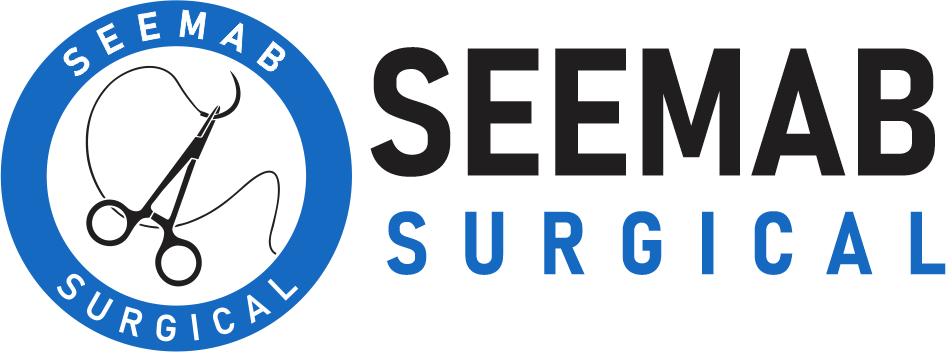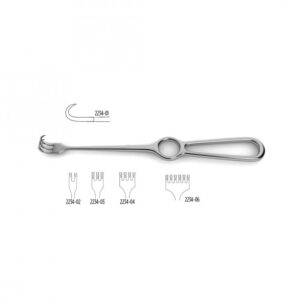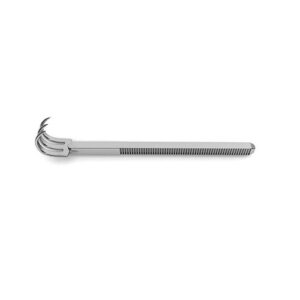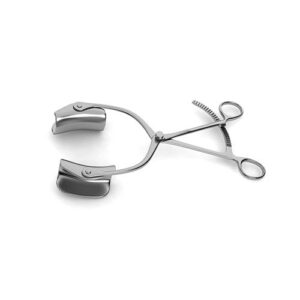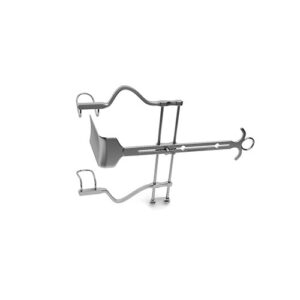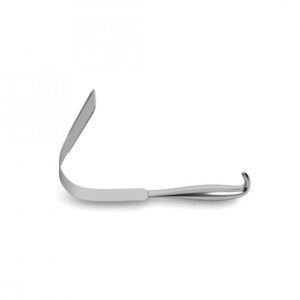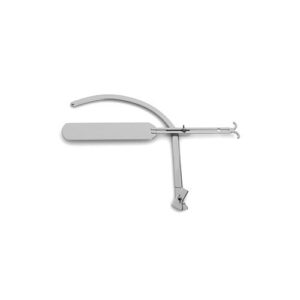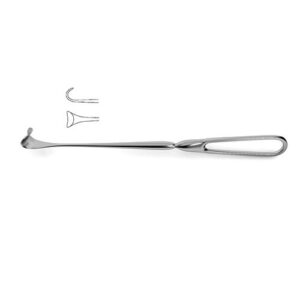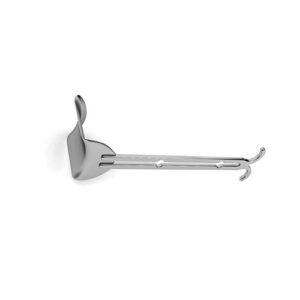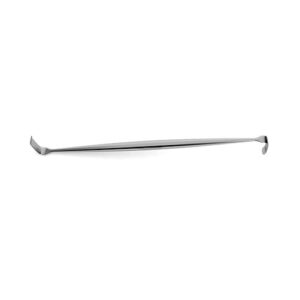| Name | Universal Ring Retractor Meyerding Blade |
| Lead Time | 0-10 days |
| Specialty | General Instruments-Hooks & Retractors – Universal Ring Retractor System |
| Material Finish | Stainless Steel |
| Grade | Premium Operating Room |
| Units of Measurement | Each |
| Manufacturer | seemab surgical |
| Sterility | Non-Sterile |
| Usage | Reusable |
Universal Ring Retractor Meyerding Blade
Universal Ring Retractor Meyerding Blade
Universal Ring Retractor Meyerding Blade is identified by a flat blade that is curved at a right-angle. This blade has a lip on the edge that is available with or without teeth. Commonly used to retract large muscles, this blade is offered in different sizes to accommodate a range of cases.
SKU:
VI-01-610
Category: Hooks & Retractors
Description
Shipping & Delivery
Related products
Collin Abdominal Retractor
Set includes: frame (110.0 mm spread, 9-1/4" (23.5 cm)) & pair of blades (62.0 x 38.0 mm)
Collin Abdominal Retractor is an entire set that includes a frame and a pair of blades. These blades are outwardly curved at a right angle and are deep enough to retract thicker areas of the abdomen. In addition, the retractor contains ring handles and a spreader that has a maximum spread of 110.0 mm, which can keep larger incisions open.
Balfour Abdominal Retractor W/ Fixed Side Blades – 4″ Deep
w/ fixed fenestrated side blades, 4" deep & center blade #2470-73 (3-3/8" x 2-1/2")
Balfour Abdominal Retractor with Fixed Side Blades contains fenestrated side blades that are fixed onto the instrument. This retractor is primarily used during surgeries in which large abdominal incisions need to be held open to provide more visibility to the surgeon. Moreover, the instrument is offered in different sized spreads to accommodate different patients.
Abdominal Retractor W/ Fixed Side Blades – 2 1/2″ Deep
w/ fixed fenestrated side blades, 2-1/2" deep & center blade #2470-72 (3" x 2")
Balfour Abdominal Retractor with Fixed Side Blades incorporates 2 ?" deep fenestrated side blades that are attached onto the center blade, which is 3" wide x 2" deep. Two different sizes of this retractor are offered according to the maximum spread they provide. The side blades of this particular retractor can be pushed and held away from each other to open up an incision in the abdominal cavity.
Glass Abdominal Retractor
Abdominal Retractor
6" (15.2 cm) x 3-1/4" (8.3 cm), 9-3/4" (24.5 cm)
B.E. Glass Abdominal Retractor contains a flexible blade with a strong curve that is affixed to a handle for gripping purposes. This type of retractor is intended to be used during surgeries that require retracting or exposing the organs in order to provide better accessibility for the surgeon.
Balfour Fourth Blade Attachment
Balfour Fourth Blade Attachment
for detachable balfour retractor systems
Balfour Fourth Blade Attachment is especially designed to be used as an addition to the Detachable Balfour Retractor Systems. The long, flat blade can accommodate to different spread sizes to fit the needs of the procedure being conducted. It also contains an option for the right arm or left arm depending on the area of the abdominal wall that needs to be retracted.
Cushing Vein Retractor – Fenestrated Handle
Cushing Vein Retractor - Fenestrated Handle
fenestrated handle
Cushing Vein Retractor is a more light-weight instrument due to its fenestrated handle. The lengths can range from 9" to 16." This vein retractor can be used during general surgeries to retract veins or other small tissues. It may also be used in other medical procedures such as neurosurgery to pull back tissue.
Balfour Wide Center Blade
Balfour Wide Center Blade
for detachable balfour retractor systems
Balfour Wide Center Blade features a wide blade that comes in two different depths depending on the area that needs to be retracted. The basic purpose of this instrument is to keep the edges of an incision separate, such as those in the abdominal area. Furthermore, this center blade is specially designed for the detachable Balfour Retractor Systems.
Davis Retractor
Double-ended, 5.0 mm x 16.0 mm & 8.0 mm x 21.0 mm blades, 5-1/2" (14.0 cm)
Davis Retractor is a stainless steel instrument that is double-ended and has opposing blades on either end. This retractor is able to divide and keep edges of an incision open. This instrument is also protected by the seemab surgical manufacturer warranty on defects in materials and workmanship.
